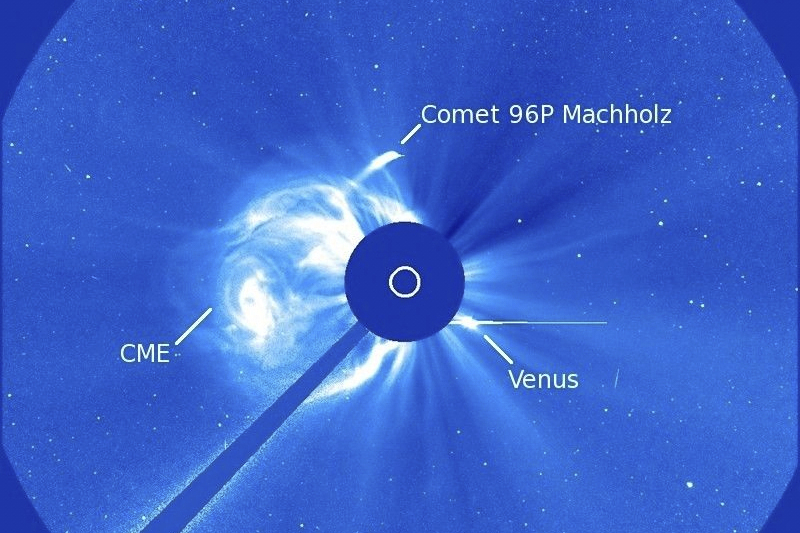By CHRISTINA LARSON AP Science Writer
WASHINGTON (AP) — It’s almost time for summer’s meteor shower duet.
The Southern Delta Aquariid and the Alpha Capricornid meteor showers peak at the same time — in the early morning of July 30.
Without too much interference from moonlight — the waxing moon will be only about a quarter full — the meteors should appear bright and clear in regions away from city lights.
With each shower expected to produce up to a dozen visible meteors per hour under dark skies, the doubleheader means the total number of meteors “do add up,” said Thaddeus LaCoursiere, planetarium program coordinator at the Bell Museum in St. Paul, Minnesota.
“Look for flashes of light in the night sky,” he said, adding that both are “very nice classic meteor showers.”
The Alpha Capricornids — produced by slower-moving meteors — may have tails that linger slightly longer in the sky, said Nick Moskovitz of the Lowell Observatory in Flagstaff, Arizona.
Viewing of each shower lasts through August 12.
What is a meteor shower?
As the Earth orbits the sun, several times a year it passes through debris left by passing comets and sometimes asteroids.
The source of the Delta Aquariids is debris from comet 96P/Machholz. The Alpha Capricornids stem from the comet 169P/NEAT.
When these fast-moving space rocks enter Earth’s atmosphere, the debris encounters new resistance from the air and becomes very hot, eventually burning up.
Sometimes the surrounding air glows briefly, leaving behind a fiery tail — the end of a “shooting star.”
You don’t need special equipment to see the various meteor showers that flash across annually, just a spot away from city lights.
How to view a meteor shower
The best time to watch a meteor shower is in the early predawn hours when the moon is low in the sky.
Competing sources of light — such as a bright moon or artificial glow — are the main obstacles to a clear view of meteors. Cloudless nights when the moon wanes smallest are optimal viewing opportunities.
And keep looking up, not down. Your eyes will be better adapted to spot shooting stars if you aren’t checking your phone.
When is the next meteor shower?
The next major meteor shower, the Perseids, peaks in mid August.
___
The Associated Press Health and Science Department receives support from the Howard Hughes Medical Institute’s Science and Educational Media Group. The AP is solely responsible for all content.
